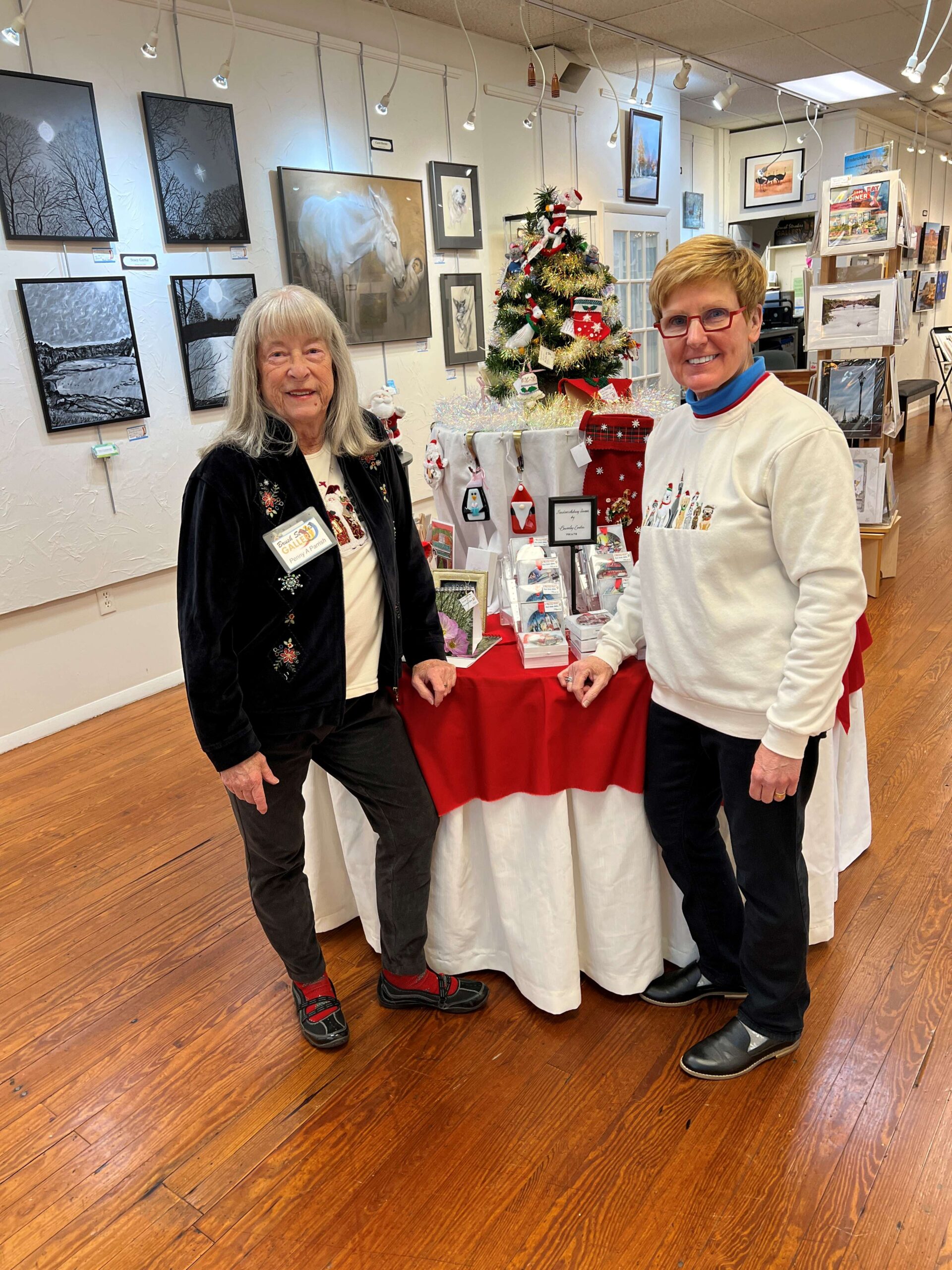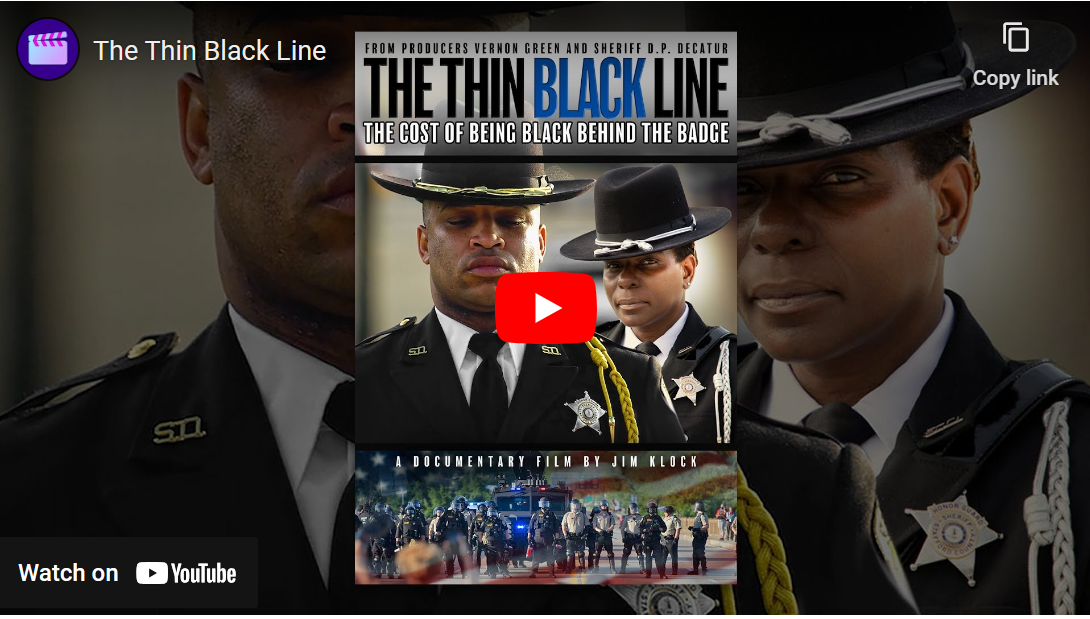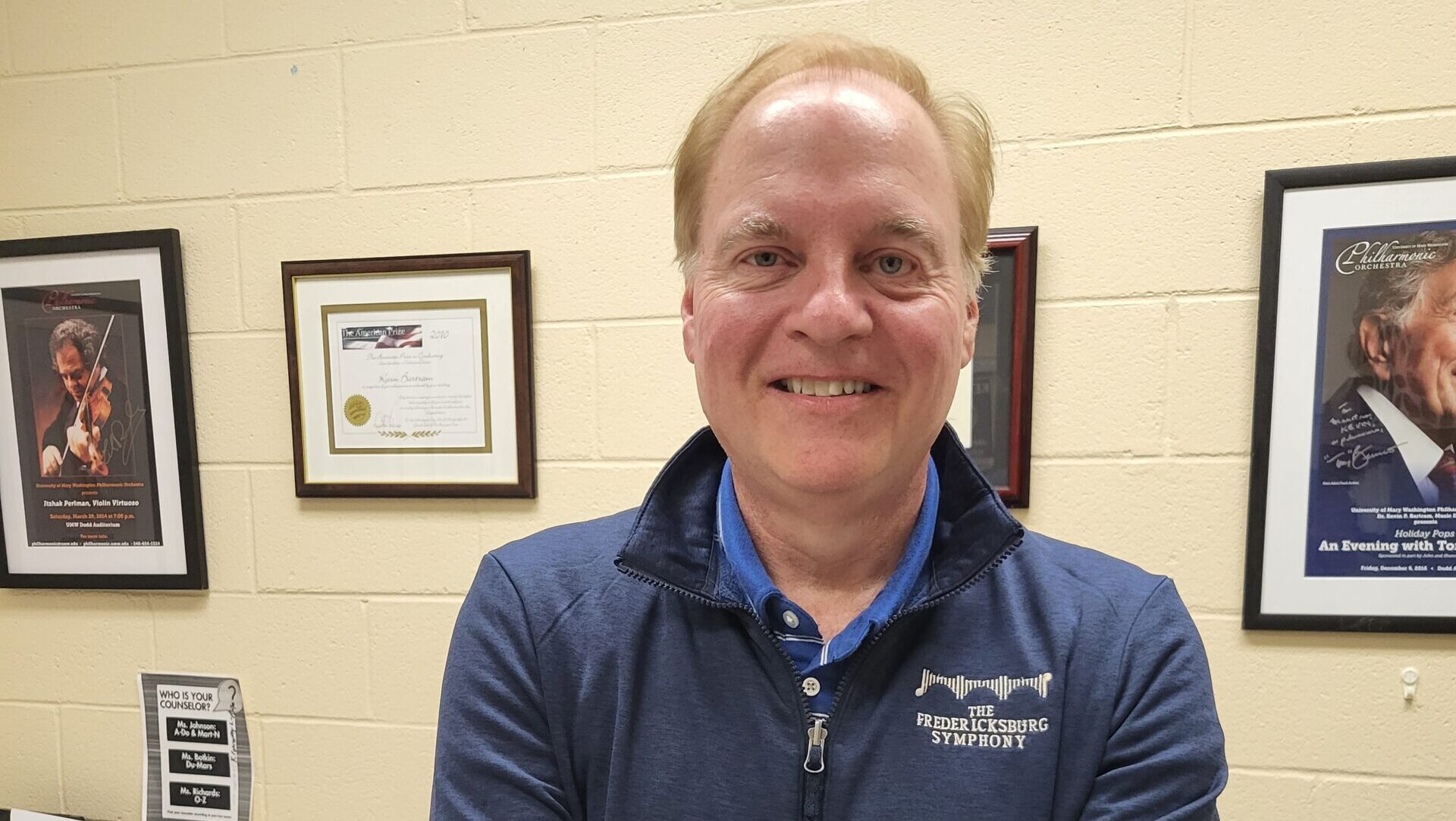
Whether it’s the university and the surrounding community, or the liberal arts and Artificial Intelligence, UMW’s president is building connections for the future.
When Troy Paino arrived at the University of Mary Washington in 2016 to become the school’s tenth president, he brought with him a trick that had served him well at his previous job as president at Truman State University in Missouri—videos.
In what Paino called a “more innocent time” for social media (2012 and 2013), he and his communications team at Truman put together a short, light-hearted video titled “T-Pain Misses You” that drew some regional and even national attention. “It was an off-the-cuff thing,” Paino told the Advance, “and the students just loved it.”
So when he arrived on campus in Fredericksburg, Paino did a series of six videos dubbed “The New Guy.” Part recruitment video, and part getting-to-know-you video, the series explored all the opportunities UMW affords students and introduced the university community to a president who genuinely enjoys spending time with students.
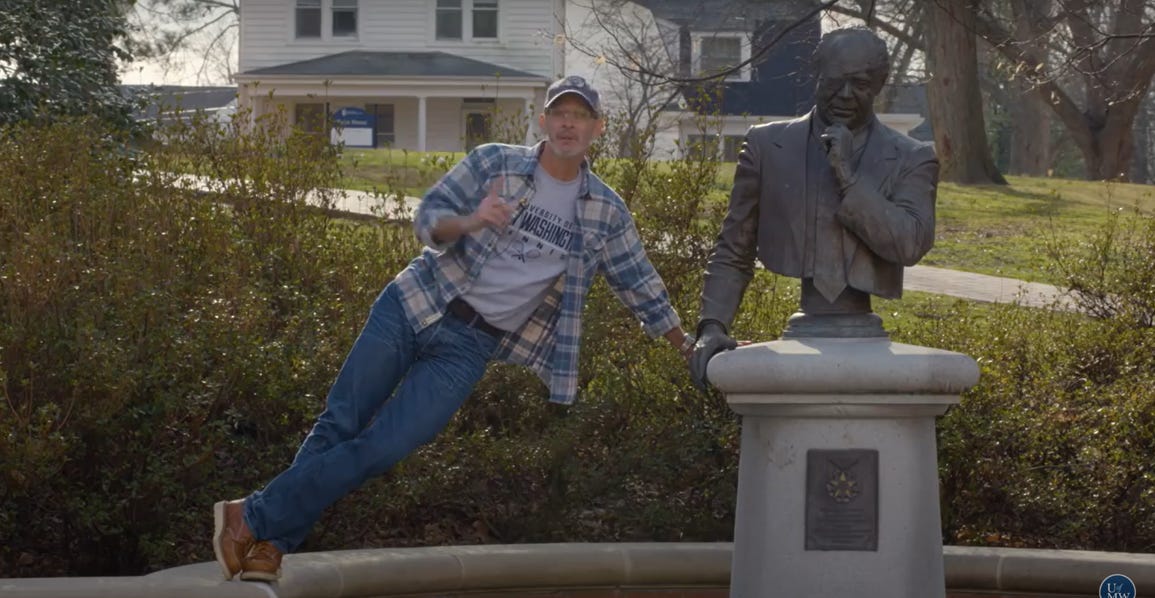
A lot has changed both on social media and in the world of universities, however, since then. Paino no longer spends much time on social media, and universities are no longer held in the esteem they once were.
Paino, however, has thrived over the past eight years by reshaping the future of the University of Mary Washington and charting a course that marries the liberal arts with the practical arts. And he’s earned national accolades for his commitment to students and their work.
In an extensive interview with the Advance, Paino discusses these changes, and the path that he’s set UMW on as it prepares to head into the second half of the decade.
FXBG Advance: You’ve described the early 20-teens as a “more innocent time” in social media, and that your experience with the medium has since changed. What spurred that change?
President Paino: I noticed the rise in toxicity around social media right around the time I arrived at UMW in 2016. I wasn’t sure, however, what was driving the change.
Having grown up and spent my professional life in the Midwest, was I witnessing a difference in Midwest and East Coast culture? Was the social media more toxic because we are closer to Washington, D.C.? Was it the rise of President Trump?
There’s no one answer to this question, but I did come to the conclusion that it was better for my soul if I engaged less in social media. I am on Instagram, but I work with our communications team and post only about once a month, and then mainly for the benefit of the students.
The negative surrounding social media far outweighs the benefits, so in a sense I’ve gone back in time and I’m working to create as much space as I can to have intimate conversations with students.
Doing this keeps me in the right head space to run the university. As a leader, you can’t frame things in a negative way. One has to share a sense of hope.
FXBG Advance: You are a vocal defender of a liberal arts education, and you articulated well your reasons for doing so two years ago in a Mary’s Talk video where you discussed the meaning and purpose of a “democratic institution,” and the university’s responsibility to produce sound citizens. Many factors are disrupting that idealistic vision today. What do you see as the greatest challenges to the survival of the liberal arts curriculum?
President Paino: University education has become more transactional than transformative. In other words, we’re more focused on the economic-return-in-investment a college degree brings than on the endearing values of education.
This transition is coming down on universities due to significant societal changes, but higher education has been complicit in this transition.
One reason we talk about education in transactional terms – how much money will I earn with a college degree versus without one – is the escalating cost of a college education.
We can go back to the 1990s when state cuts began forcing schools to push more of the educational costs onto students. However, higher education began making large investments in things that will attract students to campuses, like climbing walls and fitness centers. All this added to the cost of an education.
These moves were appealing to students on an economic level, not an educational level.
FXBG Advance: Obviously, liberal arts graduates are not going to compete with engineering graduates in terms of average incomes after college. How does the liberal arts curriculum compete in a transactional educational environment?
President Paino: We have to be careful not to throw the baby out with the bathwater. The liberal arts forces us to wrestle with core questions such as, “What does it mean to be human? What does it mean to be an educated person?”
These questions are especially important with the rise of Artificial Intelligence, and I believe the humanities have a key role to play in how we deal with the new reality that AI has created.
We’re currently part of a National Endowment for the Humanities grant that is helping our faculty and those at four other liberal arts universities to explore how we think about artificial intelligence in the curriculum and the humanities.
We are, naturally, exploring the dangers and concerns. However, we also understand that AI is our reality and it’s going to be part of our day-to-day lives.
How do we hold on to the core tenants of a liberal arts education, but continuously adapt to the world that we live in?
It’s a false choice to say that we must choose between the liberal arts and the practical arts.
The sweet spot is a liberal arts education that helps people think about how to build their life after they graduate. One way that we’re doing this at UMW is proposing the idea of a Center for AI in the Liberal Arts.
Certainly, we are seeing declines in people studying traditional liberal disciplines, but as we think more broadly about the liberal arts and AI, I believe these disciplines will rebound.
Because of this, I feel that a place like UMW is needed more now than ever.
FXBG Advance: According to the State Council for Higher Education in Virginia, UMW has realized a steady decline in enrollment from its high in 2018 (4,410 undergraduates) to 2023 (3,611 undergraduates). How do you explain this decline, and how are you addressing it?
President Paino: We are smaller for sure, and there are several factors at play. Some of them are beyond our control, and others are the direct result of actions that we’ve taken.
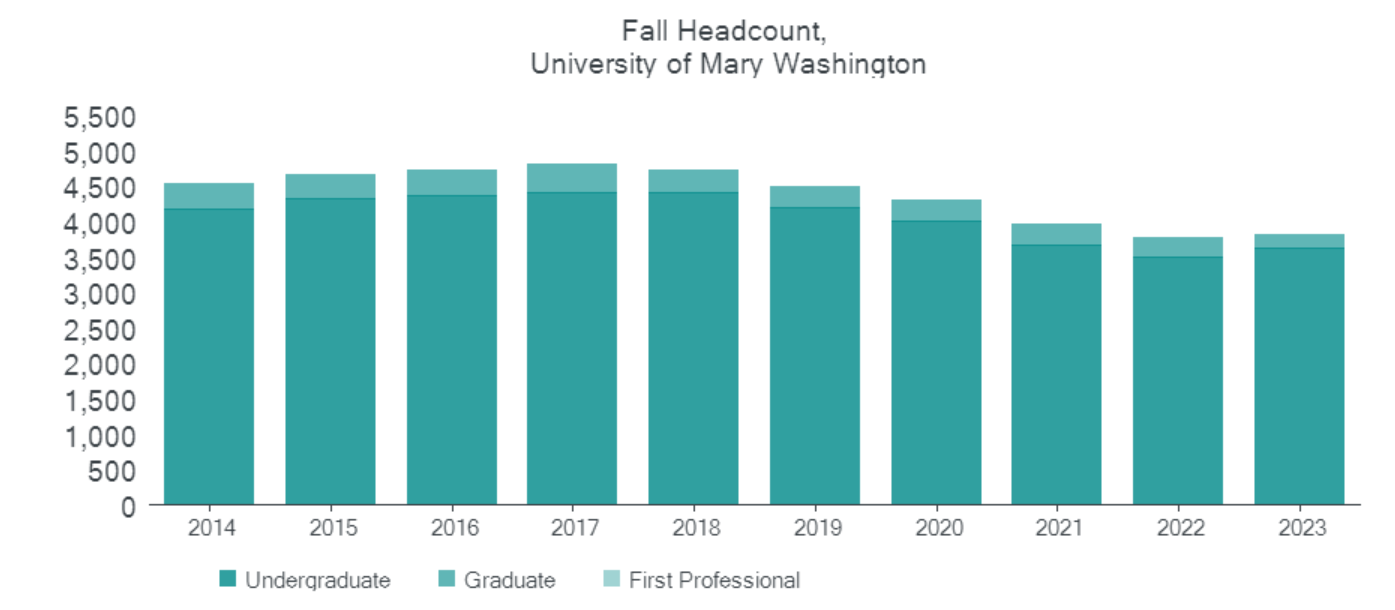
If you go back 25 years and take a snapshot of MW’s enrollment at the macro level, it’s almost identical to where we are now. But scratch beneath the surface, and things are very different now.
In 1999, our student body was 65% in-state students and 35% out-of-state students. Today, that split is more like 88% to 12%.
This decline in out-of-state students is due to demographic shifts.
We used to get lots of students from New England, especially New York and New Jersey. Back at that time, out-of-state costs for Mary Washington were very close to in-state tuition rates for schools in New England.
As population has declined in New England, however, states have created incentives that make it easier for students to stay closer to home.
At the same time, the cost of out-of-state tuition has risen sharply and continues to climb.
Now, we’re bringing in fewer out-of-state students, and we’re competing for in-state students in a very competitive, contained market.
FXBG Advance: So fewer out-of-state students, and greater competition for a shrinking base of in-state students is making recruitment difficult. Are there other factors?
President Paino: Yes. As a public institution, we don’t have as much self-determination over the programs we offer as people might believe.
We are 50 miles from George Mason University to the north and Virginia Commonwealth University to the south, both of which are Research I, doctoral granting institutions.
The folks in Richmond have no interest in UMW becoming a more-comprehensive Research I university, positioned as we currently are geographically. This means that we have to play to our strengths, which are the liberal arts, low teacher-student ratios, undergraduate research, and more-individualized instruction.
When I arrived, my predecessors had been in a growth mode. Around 2018, however, as we examined the realities we’re in, we began a strategic initiative to slightly lower our numbers. I thought our ideal student body size would be closer to 4,000.
As we were intentionally downsizing, the pandemic hit, and it struck us particularly hard. We recruit one student at a time. We don’t have the name recognition of a UVA or Virginia Tech. We recruit students by getting them on this beautiful campus and getting a sense of the type of education that happens here. The pandemic made this much more difficult to do.
We are beginning to bounce back, and we are potentially looking at an undergraduate student body population in the fall of around 3,800 students.
FXBG Advance: So is UMW not going to pursue new programs? The liberal arts may well rebound, but right now enrollment numbers in such programs are down across the state.
President Paino: You’re correct about the enrollment trends. And we are looking to develop more programs where it makes sense for us.
We can remain focused on our liberal arts mission, but what is our broader mission to the region? We are the only four-year degree-granting institution in the fastest-growing region of Virginia.
If we can get partners in Richmond to meet some of our regional economic needs, that’s important for us to do.
Health Care is one of the most acute needs we feel in this area. We need to be more aggressive in that space.
The university just completed a feasibility study to discover some of the low-hanging fruit we can reach for. In the health space, that might be programs in areas such as kinesiology, for example.
FXBG Advance: You’ve alluded to the fact that UMW is focused on preparing students for life after college. How are you doing that?
President Paino: We talk very seriously about post-graduate success from Day One that students are on campus. Our “Life after Mary Washington” program gets students thinking about the experiences that they’re having on campus, and how that experience will help with grad school admission or landing that first job.
We require our students to engage in experiential learning. This includes service learning, internships, and more.
[Editor’s Note: The University of Mary Washington has sent two interns to FXBG Advance, and we will again welcome one in Fall 2024.]
Much of this is headed up by our Center for Career and Professional Development.
Another aspect of preparing for life after Mary Washington is our undergraduate research focus, for which we recently received a $30 million gift to support the sciences.
Our goal here is to marry the liberal arts with the practical arts.
FXBG Advance: One of UMW’s best-known Town and Gown programs is the Great Lives Lecture Series that was devised and has since be expertly carried out by Bill Crawley. How else is UMW reaching out to the community?
President Paino: Crawley is an outstanding example of what a public intellectual is. He bridges the divide from the cloistered halls on campus and the lives of the people in and around Fredericksburg. Stephen Farnsworth is another such faculty member.
We believe strongly in the importance of public intellectuals; we want to bring people into our community of learners here.
Most recently we saw this in the rollout of the new Civil Rights Trail. Members of our geography, history, and historic preservation departments were closely involved with that project, as were many of our students.
We’ve previously mentioned the Center for Community Engagement, which certainly does a lot of this. We’re also very proud of our partnerships with K-12 programs both here in Fredericksburg, as well as in the surrounding counties.
And it’s not just our faculty. We view everyone on campus as educators, and this includes our skilled workers.
Milton Klein, for example, who for years ran the paint shop on campus, would hire students in the summer months and train them in painting. He was a major influence on their lives, and by extension the community at large.
At James Monroe High School, we have an apprenticeship program to get kids from JM onto our campus. We just hired a JM graduate as an apprentice electrician.
A very visible center of our community is our new theater, which is intentionally being built to face toward the city, to send the message that we want to be fully integrated with our community.
Our futures are intertwined. The more we can work together, the better.

Local Obituaries
To view local obituaries or to send a note to family and loved ones, please visit our website at the link that follows.

Support Award-winning, Locally Focused Journalism

The FXBG Advance cuts through the talking points to deliver both incisive and informative news about the issues, people, and organizations that daily affect your life. And we do it in a multi-partisan format that has no equal in this region. Over the past month, our reporting was:
$8 a month supports great journalism
- First to report Mary Washington Healthcare’s move to close Kid’s Station Daycare
- First to detail MWHC’s taking actions that undermine the viability of the Moss Free Clinic.
- First to detail and then expose the controversy surrounding the Riverbend High School swim team
- Providing the region’s best political coverage of the upcoming 7th District Congressional race.
For just $8 a month, you can help support top-flight journalism that puts people over policies.
Your contributions 100% support our journalists.
Help us as we continue to grow!



